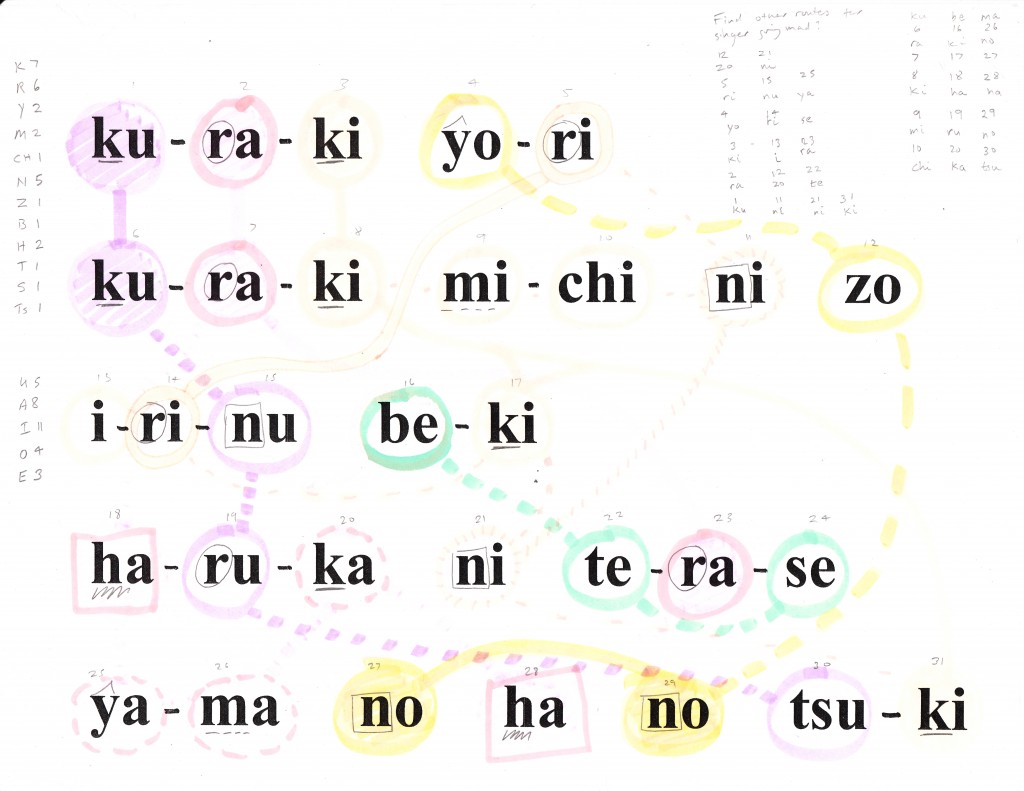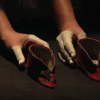 The Arbitrariness of Language for solo piano (duration 8’00)
The Arbitrariness of Language for solo piano (duration 8’00)
by Evelyn Ficarra
Recording:
Piano, Eva-Maria Zimmermann
Old First Church, San Francisco, 9th May 2010
This piece is based on a poem by the Medieval Japanese poet Izumi Shikibu. A phonetic rendering of this poem in the Roman alphabet reads:
kuraki yori
kuraki michi ni zo
irinu beki
haruka ni terase
yama no ha no tsuki
translating roughly as;
one must enter from the darkness into a dark path;
shine afar, moon on the edge of the mountains! *
This rendering explores the sound and structure of the poem; its rhythms, its irregular repetitions, its balance. My aim has been to create a series of translations/transliterations of the sonic material; each consonant and vowel has its pianistic equivalent, sometimes more than one.
In the original Tanka form, the poem has 31 syllables over 5 lines (5 7 5 7 7.) In spoken language this can all be over very quickly; here I have stretched and compressed the material through multiple, sometimes overlapping, iterations. In these different manifestations of the phonetic material, the vowel sounds (for example) exist sometimes as longer gestures; and at others, as simpler, shorter, pitch-based versions. The base unit of a syllable might be expressed in one section as a 32nd note, in another as a half note, or as a longer block of material. I have rarely given a complete uninterrupted ‘reading’ of the poem; the first iterations of the poem mark only certain vowel sounds or consonants, leaving silences to fill out the frame. Gradually, quicker expressions of certain other syllables of the poem are broken up and dropped into the gaps. In this way, through repeated, partial iterations, the poem’s sounds and structures gradually accumulate, emerge, fragment and reform.
The title references the idea that there is no ‘real’ or organic connection between the stuff of words and what they mean. Yet our subjective connection with words can be very intimate, and a poet may choose words as much for the sound they make as for their semantic content. In working with this material I felt I was grappling head on with the supposed ‘arbitrariness’ of linguistic construction; no longer arbitrary in that I was choosing the pianistic sound material myself, yet deeply bounded by an external structure and syntax. It is, I hope, through a constant tension between honoring that structure and disrupting it, that the music emerges.
*Translation by Marié Abe.



